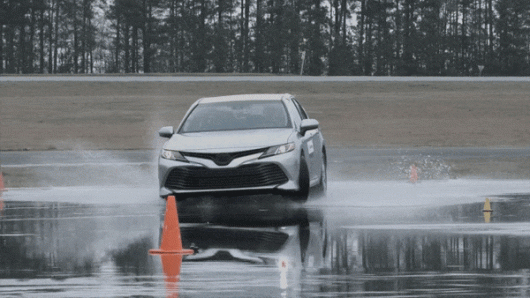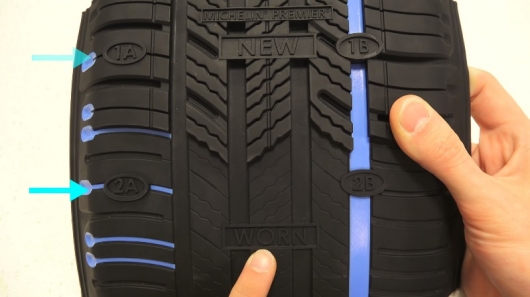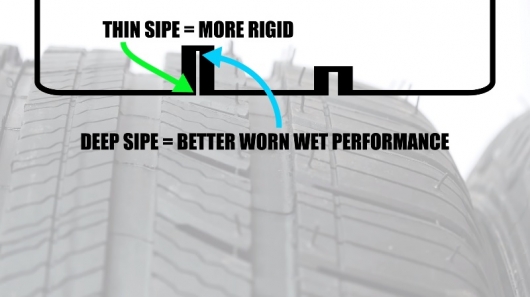New tires vs used tires – which is better?
The three most important indicator of quality tyres

Today we retranslate the idea of Jason Fenske about how tire manufacturers are fighting for safety, continuously improving the quality of their products. On what three pillars is the reliability of the tyres and whether modern tires at the end of the life cycle to be as safe as the purchase.
To determine the causes and circumstances of Fenske went to the test site, which was conducted jointly with representatives of Michelin study the characteristics of the tires, hoping to learn firsthand from one of the leading manufacturers of the industry, what determines the performance of modern car tires and exactly when it’s time to change tires as they wear.
So let’s start, here’s what we learned:
The first thing I would say is that good quality modern tires (not the fake, counterfeit and other dubious rubber products) critical, will not change its properties even after tens of thousands of kilometers. You will not notice the difference in behavior of the vehicle even when the time to replace your old tires. This is perhaps the most significant change and indicator development for the tire industry in the world. Therefore, even if any parts in the car sooner or later have to be replaced with a new part, including the tyres, you won’t put your life and the lives of other road users of dangers in those moments when you dokatyvayutsya my old tires.*
*Only on the condition that you will follow the wheels, to prevent the occurrence of hernias, fractures, destruction of the cord and will replace as soon as the rubber will wear away before the designated manufacturer of level, marked with the wear indicator of the tire.
Another interesting, but not an intuitive fact, as wear of the tires improves their behavior on dry roads. Decreases stopping distance and grip in turns increase. However, agreed Jason, with the same success, but with the sign “minus” change the properties on a wet road. The braking distance will increase and the grip on the flooded surface gradually, slightly, but inexorably worsen, due to reduce the height of the drainage channels of the tire.
To understand how “not to miss” the moment when to enter the turns at a slower speed, you need to understand what happens to the tires with the road surface.
Security depends on three main factors: “Design”, “rubber compound” and “tread Pattern”. Only a balanced combination of the three can give the desired result on the road or track.
The design of the tire creates conditions of fit of the staining of the contact to the road surface – its square, the interaction with the irregularities.
The rubber composition (compound) plays a crucial role in modern tires. It depends on how the tyre “sticks” to the surface and as the whole rubber behaves under different operating conditions (heat, cold, humid, dry surface). Modern rubber base, importantly, does not impair properties throughout the stated shelf-life tyre (usually about 5 years, provided that the rubber is new and was stored in normal conditions).
Protector. If we are talking about road tyres, protective figure, is responsible primarily for drainage of excess moisture from staining contact, preventing aquaplaning of tires. Than the tread below, the worse the behavior on wet pavement. But on a dry surface this type of rubber is explicit plus. Rubber is less “play” and trampled, winning seconds have the same tires with new tread.
For this reason, at the races in Sunny weather, it is impossible to see a racing car wearing a rubber with tread on them will put the slicks exclusively.
What you need to know to bus passed not one ten thousand miles, worked as good as new?
Do not count it for advertising, but there’s only one way to achieve such a result – to choose only the tires from proven manufacturers modern models.
For example, the Michelin tires, the tread is expanded thus, as shown in the picture below:

In this form the grooves, even if the surface wear of a tyre protector will perform its function to drain water from the contact patch as well as new tires.
On quality tires is better than an elaborate system of water drainage through the lateral gutters that wear and tear will become wider and will not change the volume “pumped” water from staining contact with the road surface.

The so-called “slats” on quality tyres also needs to reach the base of the tread. Most tire manufacturers cut them in half. These zigzag recesses penetrate the water surface to the asphalt and allow the tires to “stick” to the road.

Additional from above that used the rubber makers can note the thicker wall of the tread, reducing “walking” of rubber from side to side. Use a fine dust of quartz sand, which allows the rubber is still better to resist the wet.

All of the above technological sophistication imply quite a complicated process, which increases the cost of the final product, so cheaply, it is impossible to buy quality car tires. Alas. And more disturbing, with a 2019 safe, the road tires will become less accessible for a large number of motorists. Want to know why? Follow the link and see what awaits us: Why for many Russians, 2019 automotive rubber will become unavailable
Sometimesiamanasshole знатьЗаконодательствоТехосмотрЛайфхак
Knowledge base
